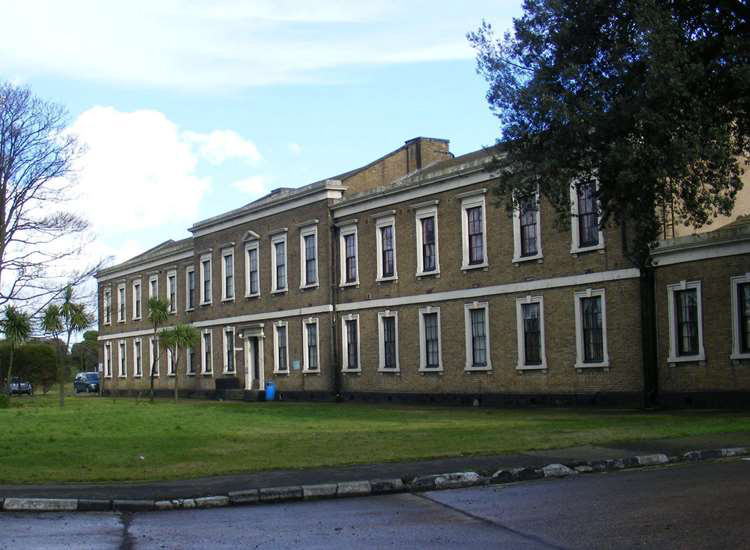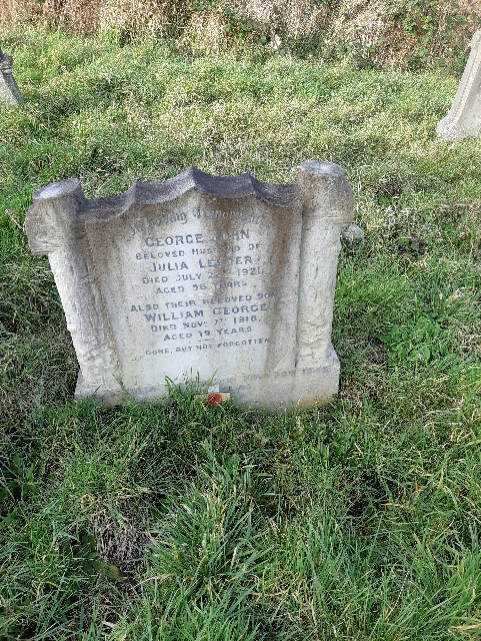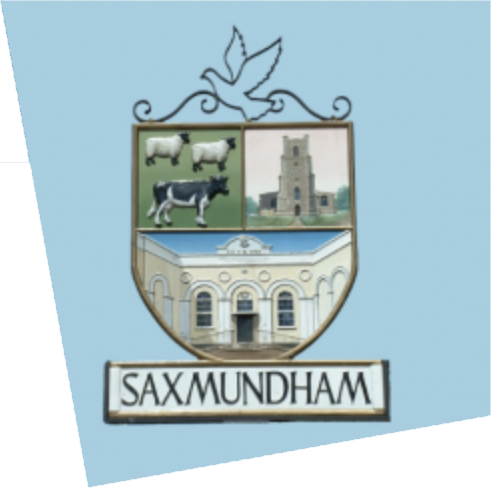
Former Military Hospital, Sheerness, Kent
Station Road, stop 16.
Private 58665, William George Leeder, 3rd Battalion Northamptonshire Regiment, born 1899, died 7 November 1918.
The narrative of William George Leeder provides an insight into the influenza pandemic and the work of the Commonwealth War Graves Commission. Born in Sudbury, Suffolk, William was just fourteen years old when war was declared in 1914. By 1911, Signalman George Leeder, William’s father, and his family moved to Saxmundham and lived in a railway house in Station Road. Aged eighteen William enlisted in Ipswich and joined the Northamptonshire Regiment. The 3rd Battalion was a home-based unit and in May 1918 William was stationed at Scrapsgate (Sheppey) where it was part of the Thames and Medway Garrison. As such William appeared safe from injury albeit not from illness. William contracted Influenza, commonly known as the Spanish Flu, a virus that affected young adults particularly adversely. Whereas some died within hours of falling ill, William fought the virus for seven days before dying of septic pneumonia. George, William’s father died in July 1921 and was buried in William’s grave and whilst designated an official war grave, Julia received no money towards the personal headstone.
One of seven of eleven surviving children of George John and Julia Leeder in 1911, William George, born in Sudbury, Suffolk, was just fourteen years old when war was declared in 1914. Whilst his father was born in Aldeburgh and mother in Marlesford, the family moved regularly throughout their married life due to George’s work on the railway. By 1911, Signalman George Leeder and his family moved to Saxmundham and lived in a railway house in Station Road. Aged eleven years old, William attended school.
William enlisted in Ipswich and joined the Northamptonshire Regiment. This was likely sometime after his eighteenth birthday. The 3rd Battalion was a home-based unit and in May 1918 William was stationed at Scrapsgate (Sheppey) where it was part of the Thames and Medway Garrison. As such William appeared safe from injury albeit not from illness.
William contracted Influenza, commonly known as the Spanish Flu, a virus that affected young adults particularly adversely. Whereas some died within hours of falling ill, William fought the virus for seven days before dying of septic pneumonia in Sheerness Military Hospital on 7 November 1918, just four days before the armistice. One can only wonder at the devastation felt by William’s parents. They likely never expected that their son would be called to serve in the war, were probably extremely relieved to find that he was home based, then they lost him to the deadly influenza virus that took over 228,000 lives in Great Britain alone.
George and Julia Leeder brought their son’s body back to Saxmundham and he was buried in the United Reformed Church (formerly Congregational Church) graveyard. Initially serving soldiers had a simple cross placed on their graves with the Portland stone markers, paid for by the Imperial War Grave Commission (latterly the Commonwealth War Grave Commission) installed later. However, events overtook this.
George, William’s father died in July 1921 and was buried in William’s grave and whilst designated an official war grave, Julia received no money towards the personal headstone. Julia’s troubles persisted after the death of her husband. With his death, she was no longer eligible to live in a railway house in York Terrance and moved to Chantry Road. Julia died in Suffolk in 1946, aged eighty-six.


